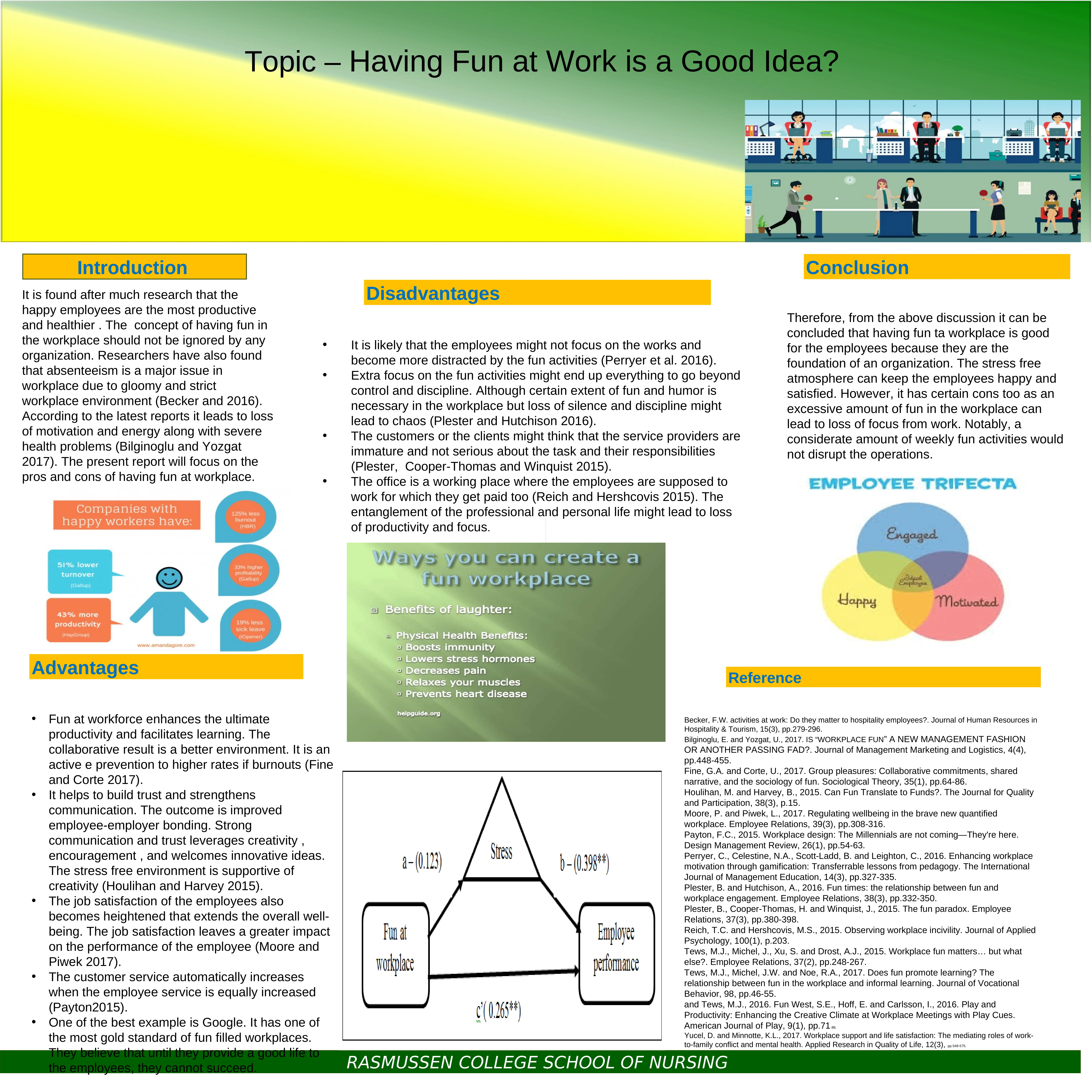Fun in the Workplace: A Leadership Perspective - Rasmussen College
VerifiedAdded on 2023/04/24
|1
|1020
|306
Essay
AI Summary
This essay explores the concept of having fun at work, examining both its advantages and disadvantages. It highlights research indicating that happy employees are more productive and healthier, while also noting that a gloomy work environment can lead to absenteeism and decreased motivation. The essay discusses the potential downsides of fun activities distracting employees and undermining discipline, as well as the risk of clients perceiving service providers as immature. Conversely, it emphasizes the benefits of fun in enhancing productivity, fostering collaboration, preventing burnout, building trust, and improving communication. The role of fun in creating a stress-free environment that supports creativity and increases job satisfaction is also explored, using Google as an example of a company that prioritizes employee well-being. The essay concludes that while fun at work is generally beneficial for employee happiness and organizational success, it must be balanced to avoid disrupting focus and productivity.







![[object Object]](/_next/static/media/star-bottom.7253800d.svg)